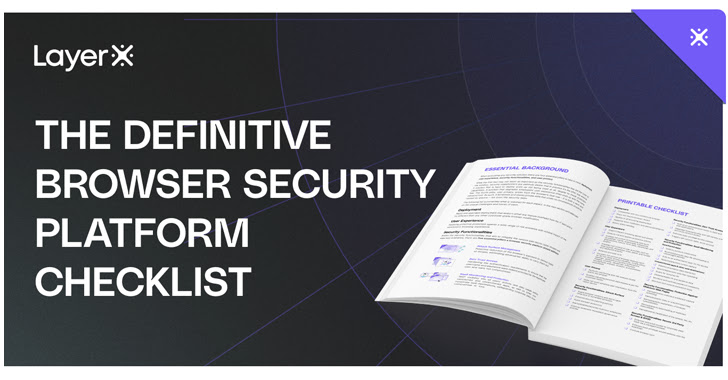As the modern corporate environment shifts to a more browser-based work model, the need for proper browser security has become increasingly important. Traditional endpoint, network, and cloud solutions may no longer be sufficient in protecting against the various types of attacks that target the browser. To address this issue, security teams are turning to purpose-built Browser Security Platforms as a solution.
However, as this security solution category is still relatively new, there is not yet an established set of browser security best practices or common evaluation criteria. LayerX, the User-First Browser Security Platform, is addressing this need by providing a downloadable Browser Security Checklist to guide security teams through the process of choosing the best solution and provide them with an actionable checklist to use during the evaluation process.
The browser has become the core workspace in the modern enterprise, making it a target for multiple types of attacks as well as a potential source of unintentional data leakage. A Browser Security Platform aims to protect against both data exposure and various types of malicious activity. This includes preventing sensitive corporate data from being shared or downloaded in an insecure manner, detecting and preventing attacks that target the browser itself, utilizing compromised credentials to access corporate data, and leveraging modern web page technology to launch sophisticated attacks.
When choosing a Browser Security Platform, it is important to consider factors such as deployment methods, solution architecture, user privacy, and prioritization of threats and risks. The Browser Security Checklist provided by LayerX breaks down these considerations into five pillars: deployment, user experience, protection, management and administration, and privacy.
Using this checklist can aid security teams in evaluating different solutions and making an informed decision on the best fit for their organization. It also helps to ensure that all important aspects of browser security are taken into account, from deployment and user experience to protection against various types of attacks and data privacy.
In conclusion, the shift to a more browser-based work model has made proper browser security essential. As the browser security solution category is relatively new, the Browser Security Checklist provided by LayerX can aid security teams in choosing the best fit for their organization by breaking down the evaluation process into easily digestible chunks and providing an actionable checklist to use during the selection process.

Comments
Post a Comment